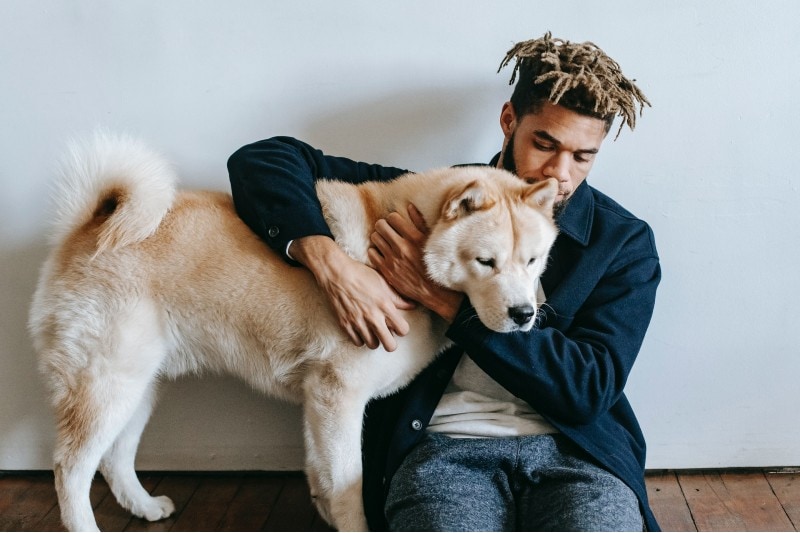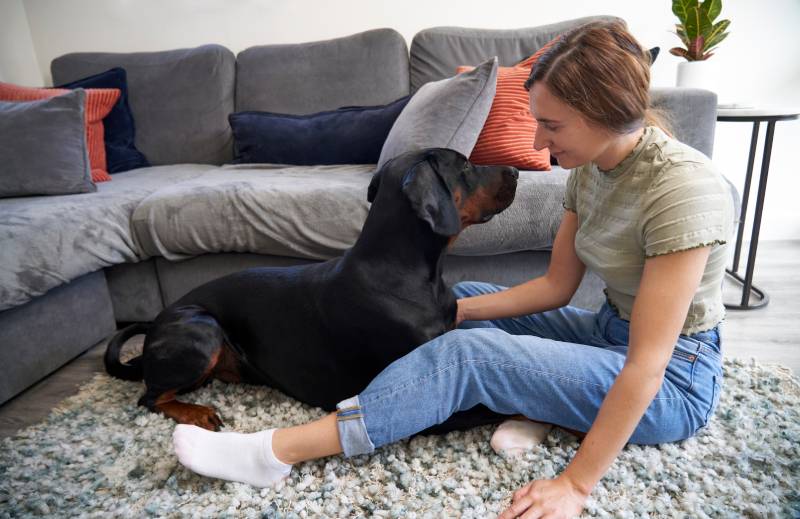How to Train an Airedale Terrier: 7 Expert Tips
Updated on

Like all dogs, Airedale Terriers require training to grow into well-mannered canines. Training teaches them the basic commands they need to know to flourish, as well as manners. Because these dogs are somewhat reserved and protective, training is necessary to prevent aggression.
Luckily, these dogs are also smart and pretty easy to train. They don’t require any special training steps, though you should focus more on socialization than you might with another breed.
Here is everything you need to know about training these dogs.
The 7 Expert Tips on How to Train an Airedale Terrier
1. Start Early
You should begin training your Airedale Terrier as soon as you bring them home. Many breeders may even start training their puppies before they send them to their forever home. As soon as a puppy can interact with the outside world, you can begin training.
It’s much easier to train early and prevent bad habits than it is to try to break those habits later. You should make a list of “dog rules” before you bring home your puppy and have everyone in the household on the same page. This step makes it much easier to control these dogs later.
Of course, puppies typically need shorter training sessions than adults, as their attention span is smaller. Keep this in mind when preparing a training plan.

2. Socialization
Start socialization as soon as you can. These dogs can be naturally aggressive, so you should be especially focused on introducing them to a wide range of people and animals at an early age.
You can begin socializing your dog at home with simple household items. Get your dog used to the vacuum, for instance. Whenever your puppy has had their vaccinations, you can begin taking your dog out into public. We highly recommend dog training classes, as these can provide training and socialization in a safe, controlled environment.
3. Basic Commands
Start training with the most basic commands your dog needs to know. It is best to start with an “attention” command that you will use to make your dog look at you. This command helps catch your dog’s attention when they may be distracted.
After you’ve taught the basics of attention, move on to commands like “sit” and “stay.” These commands tend to be the precursors of other commands, so they’re important to teach your dog first.
4. Crate Training
You should also begin to crate-train your dog. This process involves making your dog’s crate a fun, comfortable place they want to be. If they enjoy being in their crate, it’s much easier to contain them when you need to. Having a crate available gives the dog somewhere to go when they need to escape the hustle and bustle of the rest of the house. To crate-train a dog, place some special chews and treats into their crate, and soon, your dog will find their time in the crate enjoyable. Never use the crate as punishment, as this ruins the point of the training.
Start with short sessions and slowly elongate them. Remember, a crate should only be large enough for your dog to stand and turn around. Too-large crates aren’t as comforting.

5. Housebreaking
You should also start housebreaking your dog as soon as you bring them home—at the same time you’re doing everything else. Housebreaking can seem like a long, hard task, but it is really only done with a few simple steps.
Firstly, you need to take your dog outside often—very often. When your puppy uses the bathroom in the correct spot, make a huge deal out of it and provide a treat. How often you take your dog outside depends on their development and age. Smaller dogs need to be taken outside more often, as they have smaller bladders. Figure out a routine and stick to it so that your dog knows what to expect.
6. Leash Training
You can typically begin leash training after everything else thus far. However, all dogs need to learn to walk on a leash, and it’s better to start the training sooner rather than later. The first step of leash training is simply getting the dog used to the leash. Start by putting the leash on and letting the dog walk around the house. Any positive interaction with the leash should be rewarded with praise and treats.
Next, you can start walking your dog around outside. Be sure not to reward pulling from the beginning. If the dog pulls, stop walking and do not go forward. If your dog knows the attention command, now is a great time to utilize it in a practical manner.
After your dog learns basic commands and the basics of walking on a leash, plan to teach them how to heel.

7. Teach Manners
You should also teach your dog basic manners that will help them remain well-behaved. For instance, your dog should not jump on people, and this should be emphasized from a very young age—even when they are puppies. Make your canine sit before you pet them or use other commands to prevent jumping. Your dog shouldn’t be rewarded for jumping, which means not petting them. Instead, wait for your dog to approach you calmly and then reward them with attention.
You should also prevent excessive barking. Luckily, these dogs often don’t have a huge problem with this when properly socialized. Some dogs are noisier than others, though. If your dog falls into this category, you should plan on teaching them the “quiet” command.
You may also need to teach your dog other manners as they come up. You may not want your dog on the furniture, for instance.
Conclusion
Airedale terriers are intelligent and often take quickly to training. However, you still have to put in the effort and time to train them. While they’re easy to train, they aren’t born knowing commands or manners. You should also focus on socialization, which is vital to prevent aggression and territorial behaviors. Airedale terriers aren’t always the friendliest, making socialization even more important.
Be patient with your dog, especially when they are younger. It is easy to imagine your dog picking up every command on the first try, but this doesn’t often occur. Your dog may quickly learn a few commands and then really struggle with another.
Be sure that everyone in your house has consistent rules to teach manners and try to incorporate commands into your everyday life. When you use commands naturally, your dog will pick up on them much faster.
Featured Image Credit: Kseniia Kolesnikova, Shutterstock











